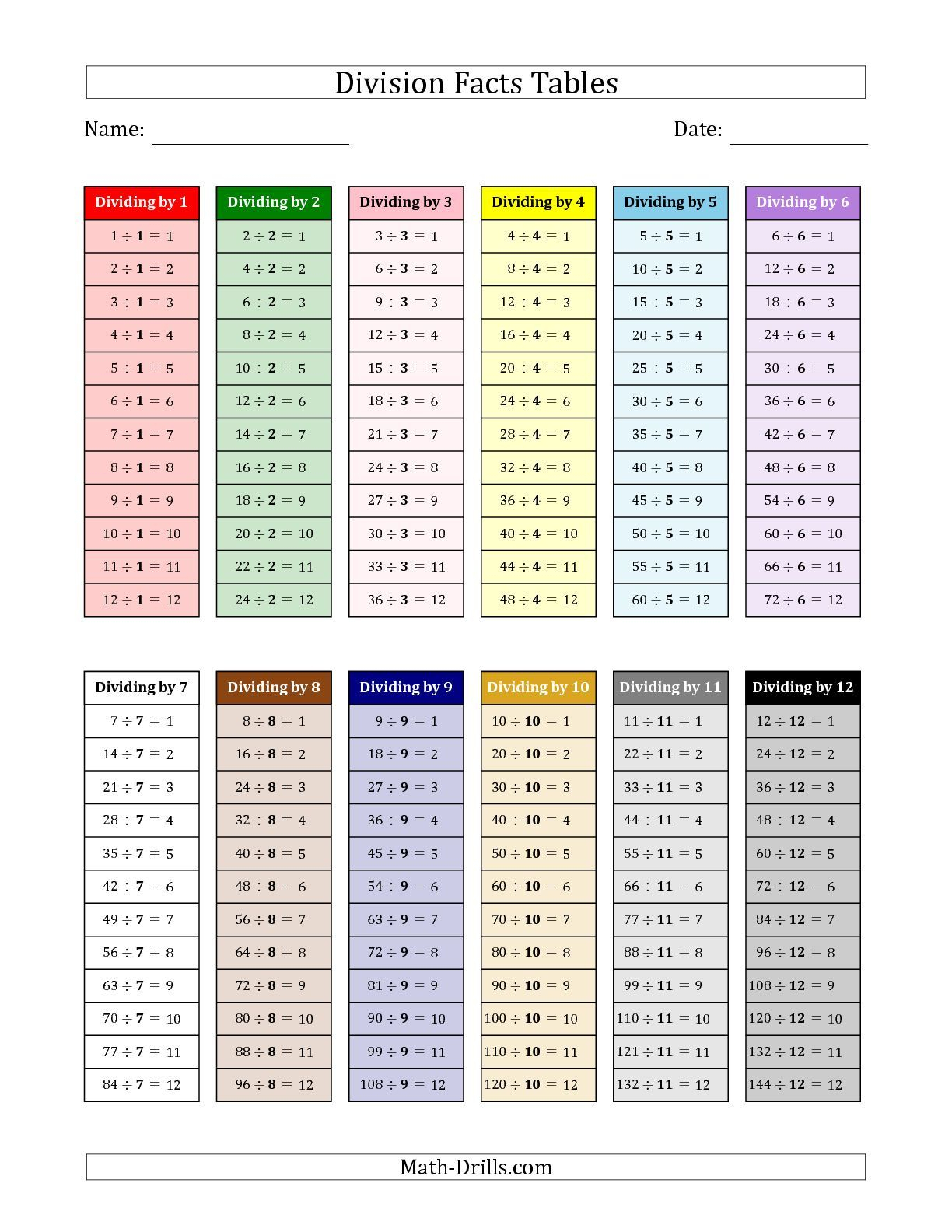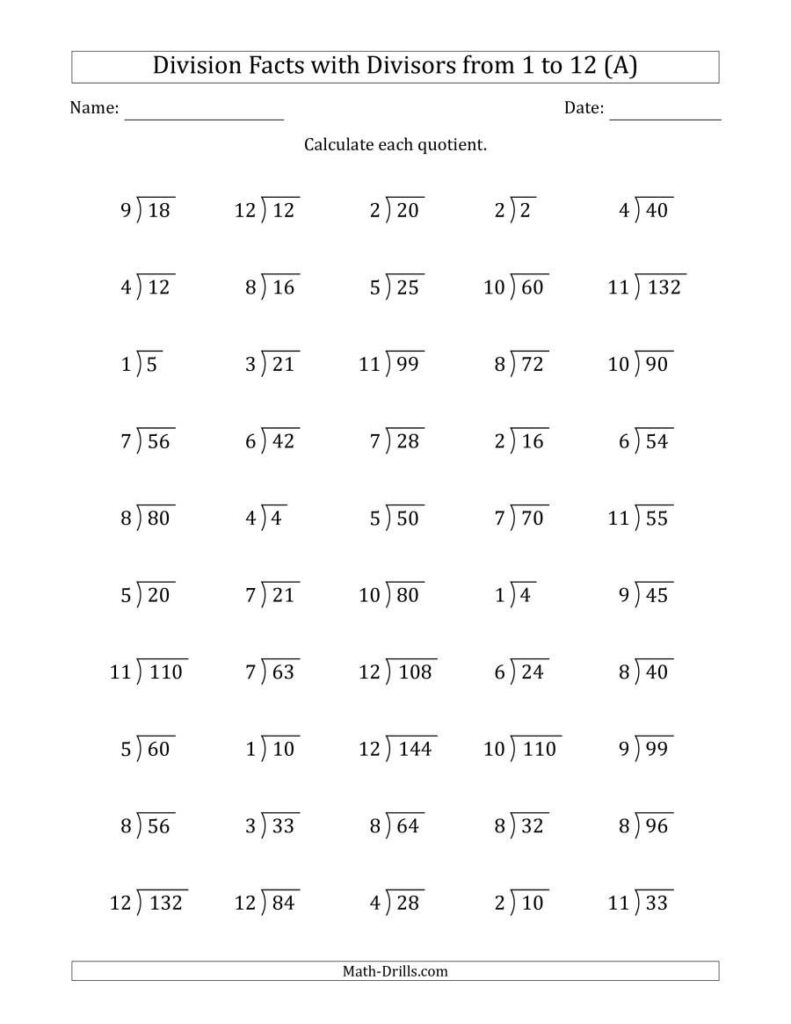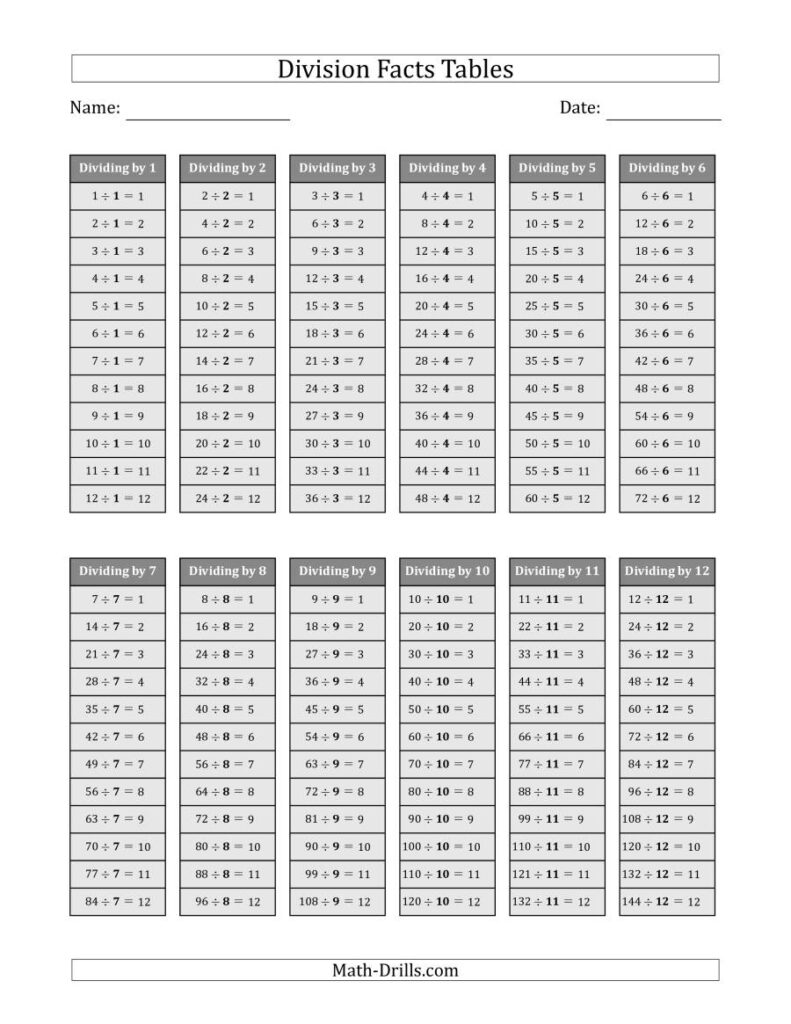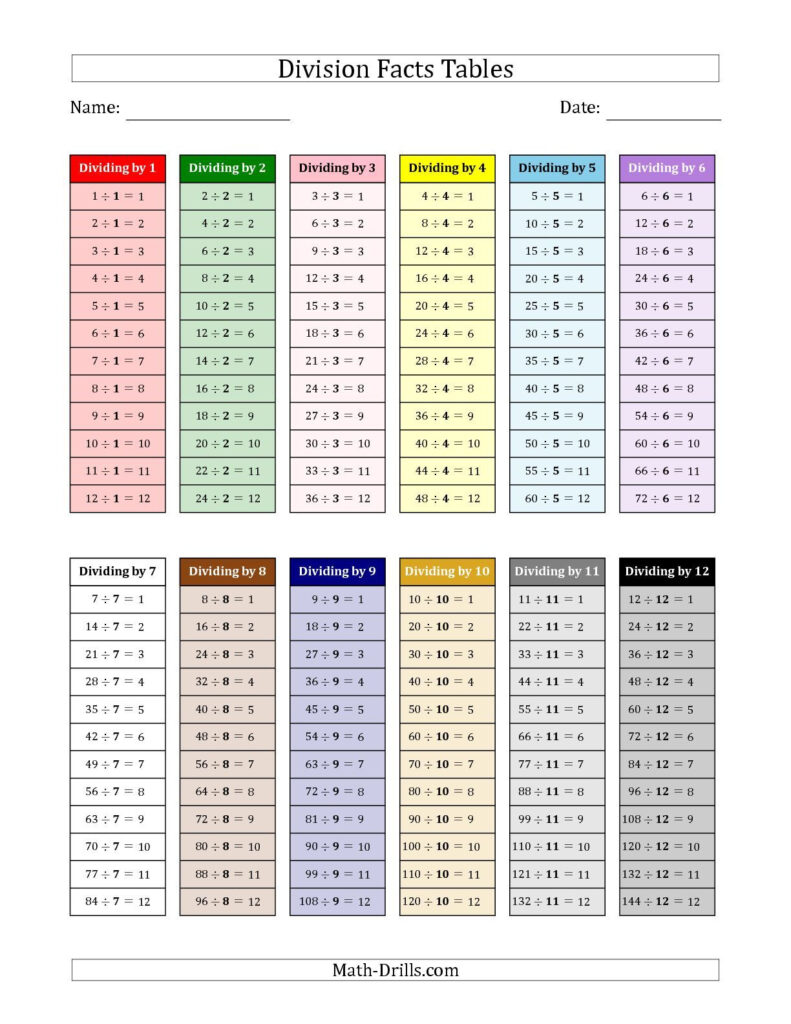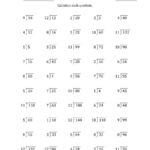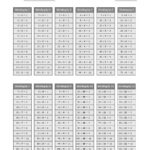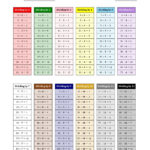Division Facts 1 12 Worksheets – Divide worksheets are an excellent opportunity to master math concepts. They’re a fantastic way to practice math concepts as well as prepare yourself for math tests. Many formats are available for worksheets which include whole numbers as well as decimals.
entire numbers
Your child can learn the basics of mathematical operations on whole number by giving him a worksheet about division of whole numbers. Worksheets on Dividing Whole Numbers can be used to help students comprehend the concept and develop their division abilities. The subjects are illustrated with illustrations and real-world examples.
There are a variety of division worksheets. Worksheets with a lot of digits and lengthy divisions are among them. Students are required to divide integers with multi-digits with their divisors using worksheets for multi-digit division. They then compute the quotient and remainder. The most common method is used for long division worksheets.
Worksheets that split whole numbers in fractions are available along with worksheets that divide numbers traditionally. This is a great method to help students develop their ability to think, and also make it second to them.
Rule of Divisibility
Children are able to better understand divisibility concepts by making use of worksheets on division that incorporate divisibility rules. These worksheets can keep children engaged and help them solve division challenges. These worksheets help kids to easily comprehend and retain details.
The worksheet provides the guidelines for divisibility . It also asks kids to identify divisible numbers. These worksheets can help improve children’s decision-making and fine motor skills. These worksheets assist children to track their progress and identify the gaps in their education.
Divide a number into its numbers to find out if it can be divided by a given number. Then, the number has to be divided by its total digits. This should also include the last number.
Fractional division
It is a good way to introduce fractions through worksheets that teach splitting fractions. This is a fantastic method of helping students prepare for algebra in higher grades.
The majority of students have trouble with fractional division regularly at the classroom. The difficulty lies in how difficult it can be to grasp. Worksheets on fractions can aid children in avoiding confusion. They are a great way to double-check children’s answers. Students may feel more at ease in class if they have worksheets to help them divide fractions.
You can use word problems, images or diagrams to assist you in dividing fractions. They also permit students to practise writing fractions in mixed number. They are available in many difficulty levels. The worksheets are suitable in grades 3 through 6.
Decimal division
Dividing whole numbers and decimals are very similar operations. There is no rest when it comes to decimal subdivision. For dividing a decimal, you shift the decimal point to the right. Round up or decrease in accordance with the digit which is following the decimal point.
First, you must establish the quotient before you can divide a decimal. Decimal quotient refers the total of the dividend and the product. It could be a multiple or one number, a multiple 10, or even 100.
A decimal quotient, in most instances is rounded up to a set number of decimal points. Trailing zeros are used for this. Divide 48.8 by 4 (decimal) division, because the dividend is worth 0.4 percent and the divisor is worth 4.88.
For large numbers to divide, you can use powers of 10.
The power of ten is an important concept. It can be extremely beneficial when you need to divide large numbers. It doesn’t matter whether you are splitting decimal numbers or whole numbers, you need to know how to change the decimal point.
In the case of dividing big numbers, it’s required to shift the decimal points in the same amount as there are zeros within a power of ten. As a result, the value will be raised, as the original number is reduced. If the number is smaller than the decimal point, it will be moved to the right. If the number is greater, it will go to the left. If the value is less then one, the exponent will be decreased by the amount that it shifts.
You must subtract the exponents in the divisor from these exponents. The scientific notation that is used to perform this step is
